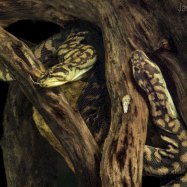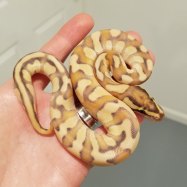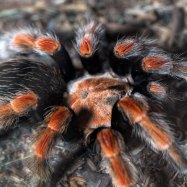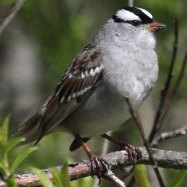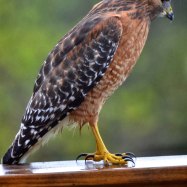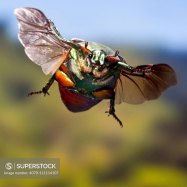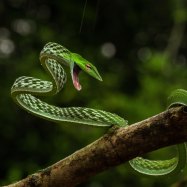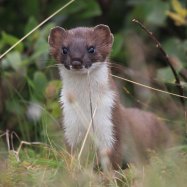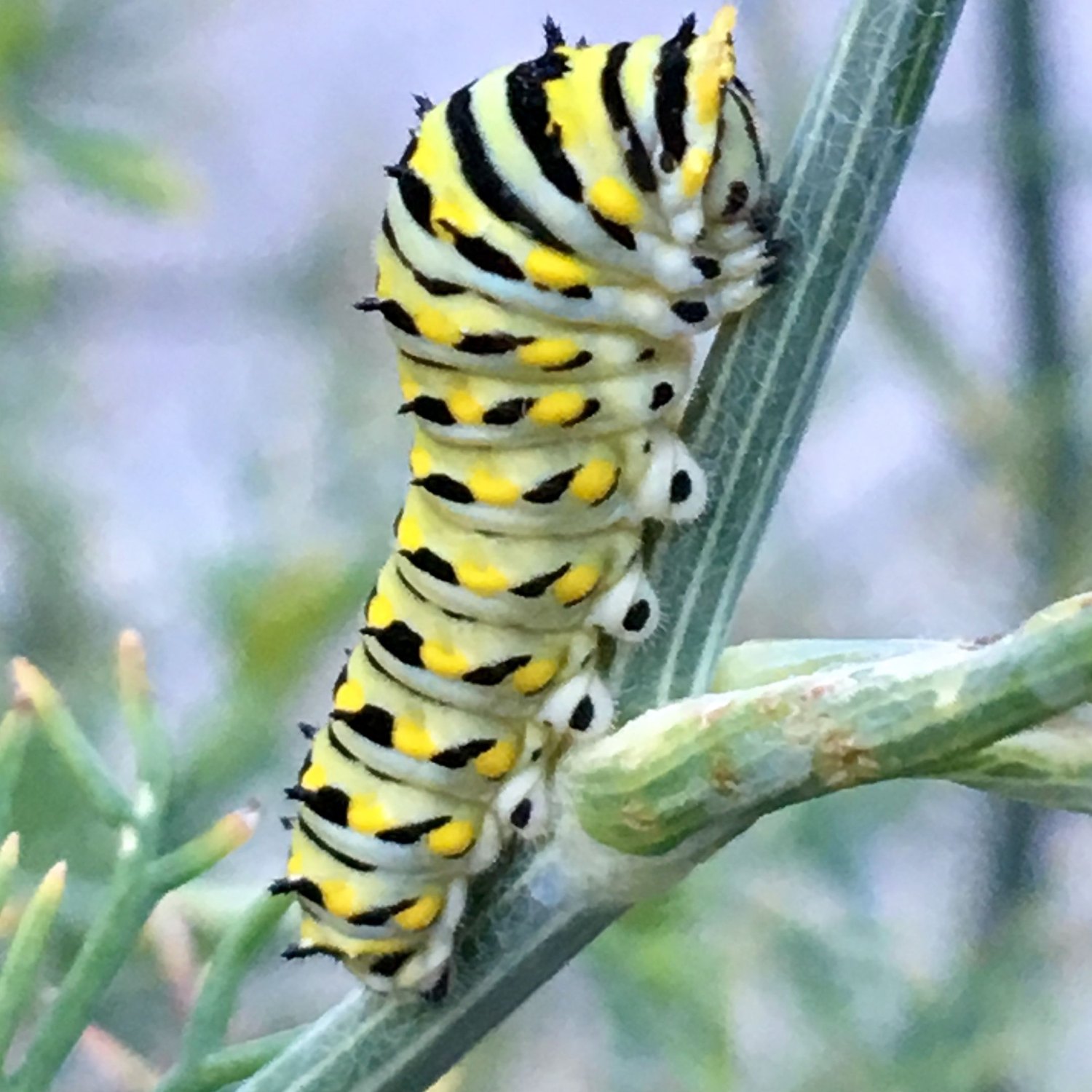
Black Swallowtail Caterpillar
1.5 to 2.5 inches
Black Swallowtail Caterpillars are fascinating creatures found in the eastern and central United States. With a length of 1.5 to 2.5 inches, they belong to the Papilionidae family and have a unique caterpillar body shape. Keep an eye out for these beautiful critters in your garden! 🦋 #BlackSwallowtailCaterpillar #Papilionidae #EasternandCentralUS
Animal Details Summary:
Common Name: Black Swallowtail Caterpillar
Kingdom: Animalia
Habitat: Open areas, gardens, meadows, fields
The Fascinating World of the Black Swallowtail Caterpillar
Nature has bestowed upon us an infinite number of creatures, each unique and astonishing in its own way. In the realm of insects, there is one species that captures our attention with its striking appearance and remarkable life cycle – the Black Swallowtail Caterpillar.This incredible creature belongs to the Papilionidae family and is scientifically known as Papilio polyxenes. However, it is commonly referred to as the Black Swallowtail Caterpillar due to its distinct coloration and feeding habits Black Swallowtail Caterpillar. Let us delve deeper into the world of this fascinating creature and discover what makes it stand out among the rest.
The Habitat and Geographic Distribution
The Black Swallowtail Caterpillar is an insect species native to North America, with its country of origin being the United States. It is most commonly found in open areas, gardens, meadows, and fields, making it a common sight for nature enthusiasts and gardeners. Its preferred habitat is one with a variety of plants and flowers, as it is a herbivorous species that feeds on leaves.In terms of distribution, this species is primarily found in the eastern and central parts of the United States. Its range includes states such as Texas, Ohio, Georgia, and New York, among others. However, it is not limited to North America, as it can also be found in some parts of Canada and Mexico.
The Physical Characteristics
The Black Swallowtail Caterpillar is a member of the kingdom Animalia and the phylum Arthropoda. It belongs to the class Insecta and the order Lepidoptera, which includes some of the most well-known insects such as butterflies and moths Bamboo Worms. As a caterpillar, it has a distinct body shape that sets it apart from other insects.On average, this species measures between 1.5 to 2.5 inches in length, making it a relatively small insect compared to other caterpillar species. It has a cylindrical body, with a head that is slightly wider than its body. Its body is covered in tiny hairs, giving it a soft and fuzzy appearance. The coloration of the Black Swallowtail Caterpillar is what truly makes it stand out.
The Vibrant Coloration
As the name suggests, the dominant color of the Black Swallowtail Caterpillar is black. However, on closer observation, one can notice the intricate patterns and hues that make up its striking appearance. Its body is primarily black, with thin lines of green and yellow running along its sides and back. These lines are more prominent towards the head and fade towards the rear.The combination of black, green, and yellow gives this caterpillar a unique and attractive appearance, making it a popular subject for nature photographers. The coloration not only serves an aesthetic purpose but also plays a crucial role in the caterpillar’s survival.
The Feeding Habits
The Black Swallowtail Caterpillar is a herbivorous species that feeds on plants and leaves. Its primary food source is the leaves of the carrot family, including parsley, fennel, and dill. It is also known to feed on other plants such as daisies and Queen Anne’s lace.One of the most fascinating aspects of this species is its feeding behavior. Upon hatching from the egg, the caterpillar goes through five stages of growth, also known as instars, during which it continuously feeds and grows. As it grows, the caterpillar sheds its skin, revealing a larger and more vibrant version of itself. It continues this process until it reaches its full size and is ready to pupate and transform into a butterfly.
The Transformation into a Butterfly
The life cycle of the Black Swallowtail Caterpillar is truly astounding, as it undergoes a complete metamorphosis before emerging as a butterfly. In its final instar, the caterpillar will attach itself to a sturdy surface and begin the process of pupation. Its body will form a chrysalis, which serves as a protective covering while it undergoes its transformation.After approximately 10-14 days, the chrysalis will rupture, and the beautiful butterfly will emerge, ready to begin its new life. The butterfly is a magnificent creature, with its wings boasting a combination of black, green, and yellow – similar to its caterpillar form. It will feed on flower nectar before mating and laying eggs, thus restarting the cycle anew.
The Importance of Black Swallowtail Caterpillars in Nature
Aside from their stunning appearance and fascinating life cycle, Black Swallowtail Caterpillars also play a significant role in the ecosystem. As herbivores, they help control the growth of certain plant species, and also serve as a source of food for predators.Furthermore, their transformation into butterflies also serves as a pollination mechanism for plants and flowers, aiding in plant reproduction. Therefore, these caterpillars not only add to the beauty of nature but also contribute to its balance and sustainability.
In some cultures, the Black Swallowtail Caterpillar holds symbolic meaning, representing transformation, growth, and the cycles of life. Its presence in our world serves as a reminder of the wondrous complexity and beauty of nature.
In conclusion, the Black Swallowtail Caterpillar is a truly captivating creature, with its striking coloration, unique feeding habits, and incredible transformation into a butterfly. It is a vital part of our ecosystem and a testament to the wonders of nature. Next time you spot one of these caterpillars, take a moment to appreciate its beauty and reflect on its remarkable journey.

Black Swallowtail Caterpillar
Animal Details Black Swallowtail Caterpillar - Scientific Name: Papilio polyxenes
- Category: Animals B
- Scientific Name: Papilio polyxenes
- Common Name: Black Swallowtail Caterpillar
- Kingdom: Animalia
- Phylum: Arthropoda
- Class: Insecta
- Order: Lepidoptera
- Family: Papilionidae
- Habitat: Open areas, gardens, meadows, fields
- Feeding Method: Herbivorous
- Geographical Distribution: North America
- Country of Origin: United States
- Location: Eastern and central United States
- Animal Coloration: Black, green, yellow
- Body Shape: Caterpillar
- Length: 1.5 to 2.5 inches
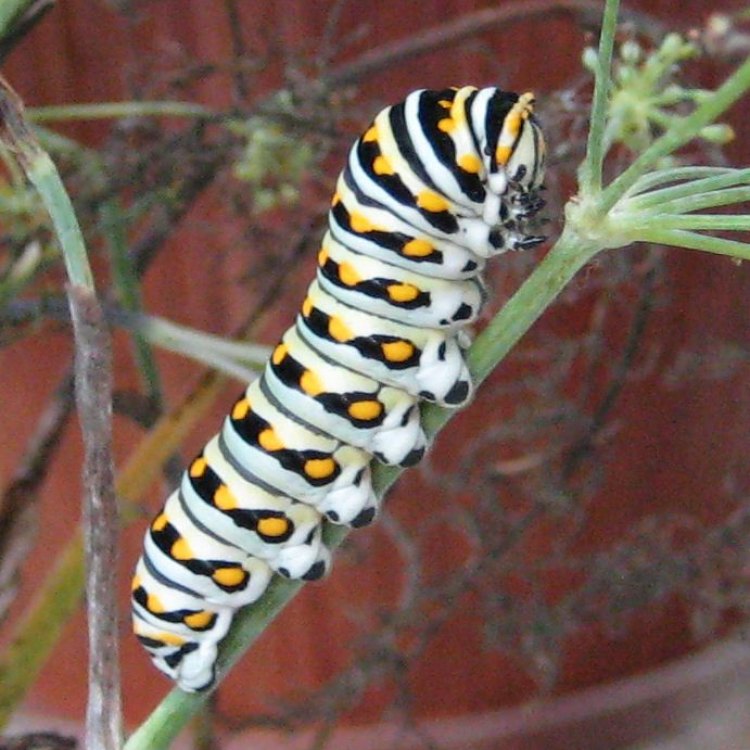
Black Swallowtail Caterpillar
- Adult Size: Approximately 3 inches
- Average Lifespan: About 2 to 3 weeks as a caterpillar
- Reproduction: Sexual
- Reproductive Behavior: Mating and egg-laying
- Sound or Call: None
- Migration Pattern: Non-migratory
- Social Groups: Solitary
- Behavior: Feeds on specific host plants
- Threats: Predators, pesticides, habitat loss
- Conservation Status: Not listed
- Impact on Ecosystem: Pollinates plants
- Human Use: None
- Distinctive Features: Bright coloration, false eyespots
- Interesting Facts: Can change color as it grows
- Predator: Birds, spiders, wasps
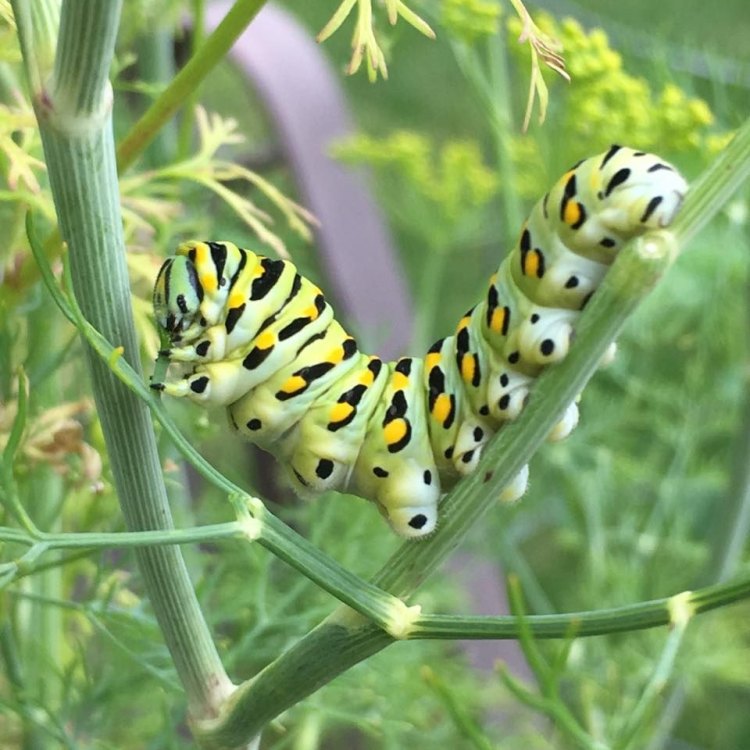
Papilio polyxenes
The Colorful World of the Black Swallowtail Caterpillar
In the sea of greens and browns that make up most of the caterpillar world, there is one species that stands out with its striking and vibrant appearance. Meet the black swallowtail caterpillar, also known as Papilio polyxenes, a charming and fascinating creature that is sure to capture your heart.This caterpillar species is the larval form of the black swallowtail butterfly and is commonly found in North America and parts of Central America. Its adult form, the black swallowtail butterfly, is a sight to behold with its black and yellow patterned wings PeaceOfAnimals.Com. But before it can transform into its beautiful butterfly form, the black swallowtail caterpillar goes through a journey of its own, filled with unique features and interesting behaviors.
Adult black swallowtail caterpillars reach an average size of approximately 3 inches, making them one of the largest caterpillar species in their range. They have a cylindrical body with smooth skin, and their characteristic bright coloration is what makes them stand out from other caterpillars.
These caterpillars can change their color as they grow, starting off with a black, spiky appearance and gradually developing vibrant stripes of green, black, white, and orange. This color change serves as a form of camouflage, allowing them to blend in with their surroundings and avoid potential predators.
Speaking of predators, these caterpillars are not without their fair share of threats in the wild. They are preyed upon by birds, spiders, and wasps, who are skilled at seeking out and devouring caterpillars. To protect themselves, black swallowtail caterpillars have evolved a unique defense mechanism – false eyespots.
Located near the head of the caterpillar are two large, black circles with a blue outline, resembling eyes Bea Tzu. This false eyespot is a form of mimicry and helps deceive potential predators, making them believe that the caterpillar is larger and more menacing than it actually is. This can give the caterpillar a chance to escape and continue its journey to adulthood.
The lifespan of a black swallowtail caterpillar is relatively short, lasting only about 2 to 3 weeks. During this time, their main goal is to feed and grow as much as possible before entering the next stage of their life cycle.
As with most butterflies and moths, reproduction is central to the life of a black swallowtail caterpillar. These caterpillars are sexual reproducers, meaning they need a mate to reproduce. Mating occurs during the adult stage of the black swallowtail butterfly. After mating, the female will lay her eggs on specific host plants, which are essential for the survival of the caterpillar.
Black swallowtail caterpillars are known to be quite picky when it comes to their food choices. They have a specialized diet that consists of specific plants, including fennel, parsley, dill, and carrot tops. The caterpillars have a specialized crop called an osmeterium, which releases a foul smell when threatened, acting as a deterrent to potential predators.
Additionally, these caterpillars are solitary creatures, meaning they prefer to be alone. They do not form social groups or colonies like some other species. This behavior is likely due to their host plant preferences, as competition for food can be intense amongst caterpillars of the same species.
Despite their solitary nature, black swallowtail caterpillars play an integral role in their ecosystem. They are important pollinators, visiting flowers to feed on nectar and inadvertently spreading pollen from one plant to another. This process plays a vital role in the reproduction of many plant species and contributes to the overall diversity and health of the ecosystem.
Unfortunately, like many other insects, black swallowtail caterpillars face numerous threats in the wild. One of the primary threats is the use of pesticides. These chemicals, intended to eradicate pests, can also harm beneficial insects such as the black swallowtail caterpillar. Pesticide use has led to a decline in the population of these caterpillars, as well as other pollinators, posing a significant threat to the balance of the ecosystem.
Habitat loss is another major issue impacting the survival of black swallowtail caterpillars. As more and more land is developed for human use, the natural habitats of these caterpillars and their host plants are being destroyed or modified. This not only affects the caterpillars directly but also indirectly impacts other plant and animal species that rely on them for survival.
Despite these threats, the black swallowtail caterpillar is not currently listed as an endangered species. However, conservation efforts are crucial to ensure the survival of these charismatic and important insects.
So, what can we do to help protect black swallowtail caterpillars and other pollinators? One way is to create a pollinator-friendly garden. By planting a diverse range of flowers and avoiding the use of pesticides, you can provide a safe haven for these and other beneficial insects.
Additionally, supporting organizations and initiatives that focus on protecting and preserving pollinator habitats can make a significant impact. By raising awareness and taking necessary actions, we can all play a role in preserving the colorful world of the black swallowtail caterpillar.
In conclusion, the black swallowtail caterpillar may seem like a small and insignificant creature in the grand scheme of things, but it plays a vital role in the delicate balance of the ecosystem. From its distinctive coloration and false eyespots to its specialized diet and solitary behavior, this caterpillar species is truly one of a kind. By understanding and appreciating its unique features and behaviors, we can work towards protecting and preserving its existence for future generations to admire and enjoy.
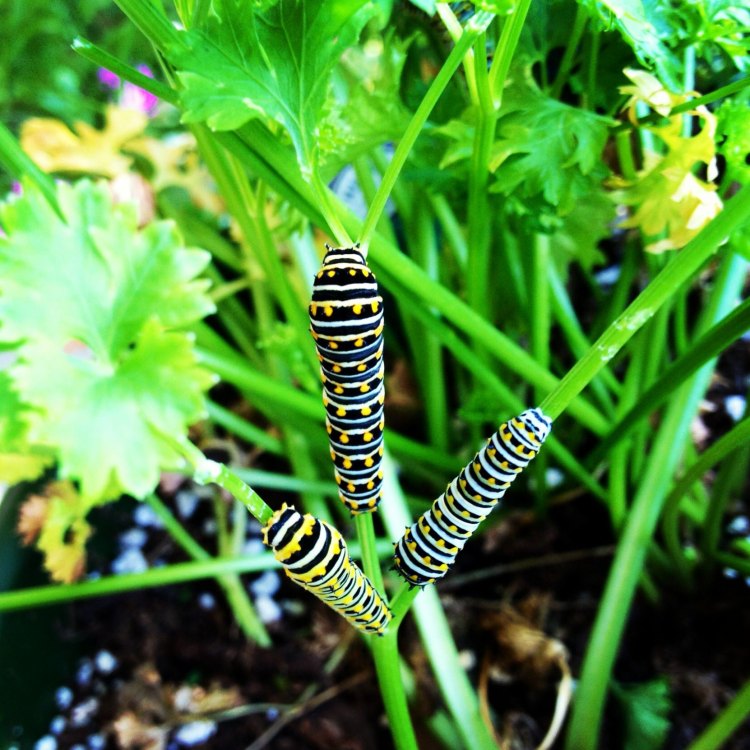
The Fascinating World of the Black Swallowtail Caterpillar
Disclaimer: The content provided is for informational purposes only. We cannot guarantee the accuracy of the information on this page 100%. All information provided here may change without prior notice.

